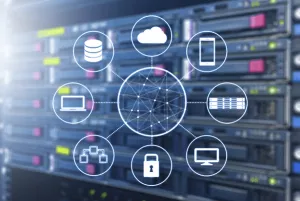Let’s face it. Your legacy storage may not be meeting your needs. Data silos may be creating a maintenance headache. But forklift upgrades are costly and downtime is expensive. Who’d have thought storing data could be so complex? This challenge is pushing droves of IT admins to virtualization where they adopt hyperconverged infrastructure (HCI) solutions. According to IDC, market revenue for converged systems hit $3.9 billion during the first quarter of 2020.
It’s easy to see why so many organizations are upgrading. HCI systems help virtualize storage, which gives admins a single storage pool to manage. Since all physical disks are treated as one pool, it’s easy for organizations to scale they grow, without costly upgrades. Virtualized storage might ultimately be simpler than legacy storage solutions, but it’s not without a few challenges. Here are the top three and what you can do to overcome them.  The most important question IT pros should ask is, who should I work with? With numerous vendors providing virtualized storage solutions, it’s crucial that you pick the one that fits your needs. One of the primary questions you must ask is, how comprehensive are their solutions? Many vendors provide solutions for storage but don’t consider the complexities of backing up virtual storage pools.
Similarly, many vendors fall down when it comes to providing you with quick options for recovering data if hardware failure affects one of the drives in your storage pool. Next, be sure the vendor you use supports the hypervisors, operating systems, and databases employed by your company. Some virtual storage solutions may not give you the flexibility you need. Last, be sure the vendor has a robust support program. You don’t want to be waiting for help when downtime comes knocking at your door.
The most important question IT pros should ask is, who should I work with? With numerous vendors providing virtualized storage solutions, it’s crucial that you pick the one that fits your needs. One of the primary questions you must ask is, how comprehensive are their solutions? Many vendors provide solutions for storage but don’t consider the complexities of backing up virtual storage pools.
Similarly, many vendors fall down when it comes to providing you with quick options for recovering data if hardware failure affects one of the drives in your storage pool. Next, be sure the vendor you use supports the hypervisors, operating systems, and databases employed by your company. Some virtual storage solutions may not give you the flexibility you need. Last, be sure the vendor has a robust support program. You don’t want to be waiting for help when downtime comes knocking at your door.
Finding a Reliable Vendor

Migrating Data from Legacy Systems
Traditionally, organizations will switch to a larger network attached storage (NAS) device when they reach capacity on their current one. This migration process is a time-consuming pain that also can result in a fair amount of downtime. IT admins understand the struggles caused by migrations, leading many of them to assume virtualizing their storage will be just as complex. They’ll be pleased to know it’s actually simple compared to migrating data between legacy solutions. Since software virtualizes your storage pool it will maintain physical addresses and re-map changed addresses to the new virtual pool, making migration simple, with no complexity and no downtime. Plus, end-users will be to access files from old devices just as easily as new ones. From their standpoint it will be as if nothing happened.Using Legacy Systems with Virtualized Storage
The fear for many administrators is that virtualized storage solutions won’t play nice with legacy solutions. You might wonder: will traditional NAS devices and other storage appliances work with my systems? In most cases, a virtualization solution doesn’t care what appliances you’re already using. One of the benefits to virtualized storage is that it treats all of your devices as one pool. If you want to keep using legacy solutions, you usually can. And, should you need to add more storage, you can use many types of devices available from many hardware vendors. The trick with legacy equipment is understanding which need special attention before you set up a virtual storage solution. You’ll typically be better off replacing old, outdated equipment now before it has a hardware failure. Your vendor should be able to help you identify which legacy systems aren’t supported so you can upgrade them before you go all-in on virtual.Upgrading Is a No-Brainer
With virtualized storage admins can simplify operational complexity, reduce total cost of ownership, and scale hassle-free when they need to. With these kinds of benefits, it’s well worth the effort. Since virtualized storage is steadily becoming the new standard, now is a great time to upgrade. Admins looking for virtualized storage paired with reliable data protection will definitely want to take a look at StorageCraft OneXafe. Get your custom demo today.You May Also Like
- Backup and Disaster Recovery Business Continuity Cloud Compliance Cybersecurity Data Protection Data Resilience Data Storage Ransomware
The Importance of Versatile Cloud Data Protection Support in a Multicloud World
December 3rd, 2024 - Backup and Disaster Recovery Business Continuity Data Protection Data Resilience Data Storage Ransomware
A Deep Dive Into Immutable Storage: How It Works for Ensuring Data Protection and Ransomware Recovery
September 26th, 2024 - Backup and Disaster Recovery Business Continuity Cloud Data Protection Data Resilience Data Storage
Microsoft 365 Backup Is Here: How Its Integration With Arcserve SaaS Backup Ensures Cost-Effective Backup and Recovery
August 15th, 2024